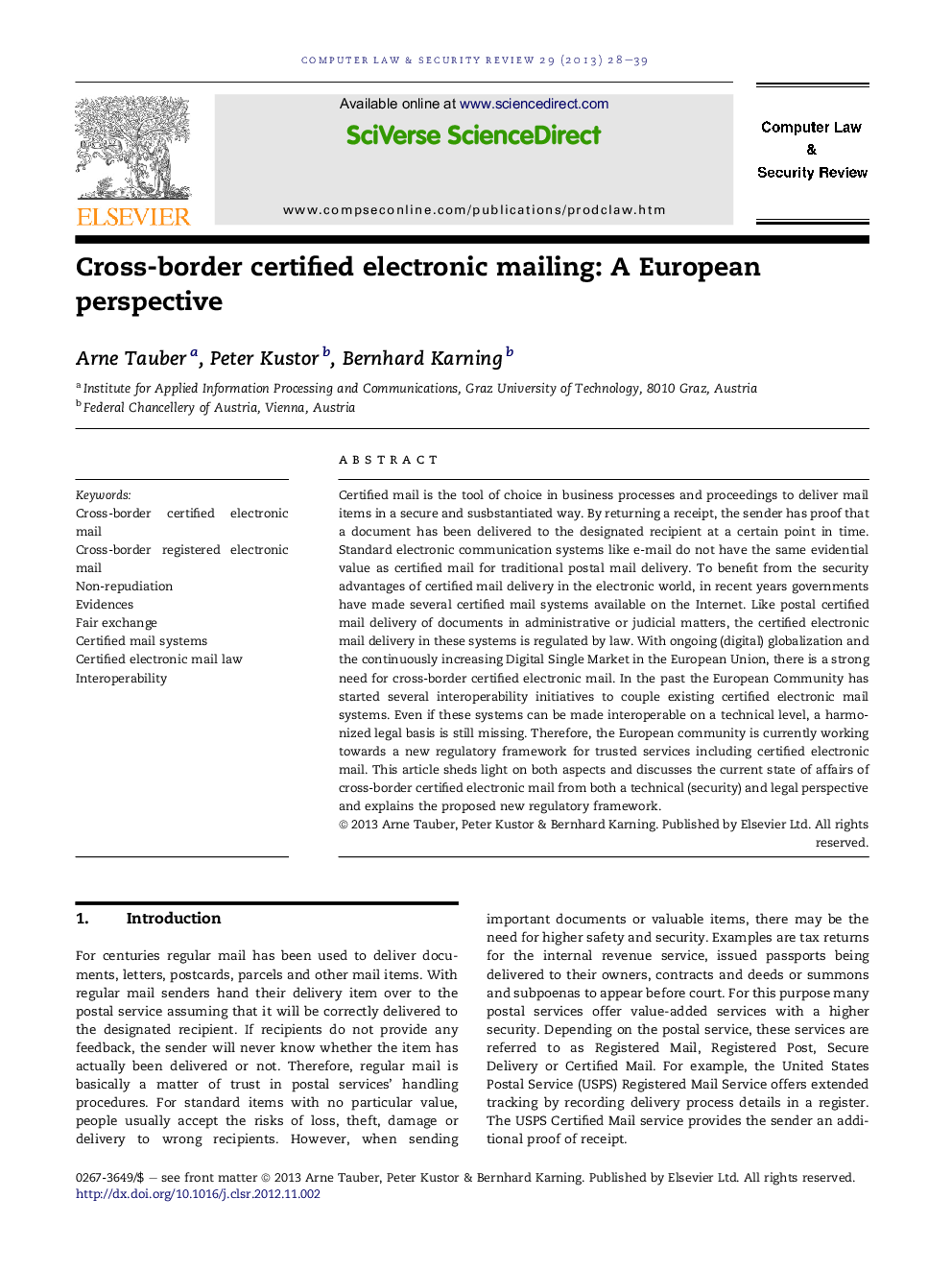| Article ID | Journal | Published Year | Pages | File Type |
|---|---|---|---|---|
| 466870 | Computer Law & Security Review | 2013 | 12 Pages |
Certified mail is the tool of choice in business processes and proceedings to deliver mail items in a secure and susbstantiated way. By returning a receipt, the sender has proof that a document has been delivered to the designated recipient at a certain point in time. Standard electronic communication systems like e-mail do not have the same evidential value as certified mail for traditional postal mail delivery. To benefit from the security advantages of certified mail delivery in the electronic world, in recent years governments have made several certified mail systems available on the Internet. Like postal certified mail delivery of documents in administrative or judicial matters, the certified electronic mail delivery in these systems is regulated by law. With ongoing (digital) globalization and the continuously increasing Digital Single Market in the European Union, there is a strong need for cross-border certified electronic mail. In the past the European Community has started several interoperability initiatives to couple existing certified electronic mail systems. Even if these systems can be made interoperable on a technical level, a harmonized legal basis is still missing. Therefore, the European community is currently working towards a new regulatory framework for trusted services including certified electronic mail. This article sheds light on both aspects and discusses the current state of affairs of cross-border certified electronic mail from both a technical (security) and legal perspective and explains the proposed new regulatory framework.
